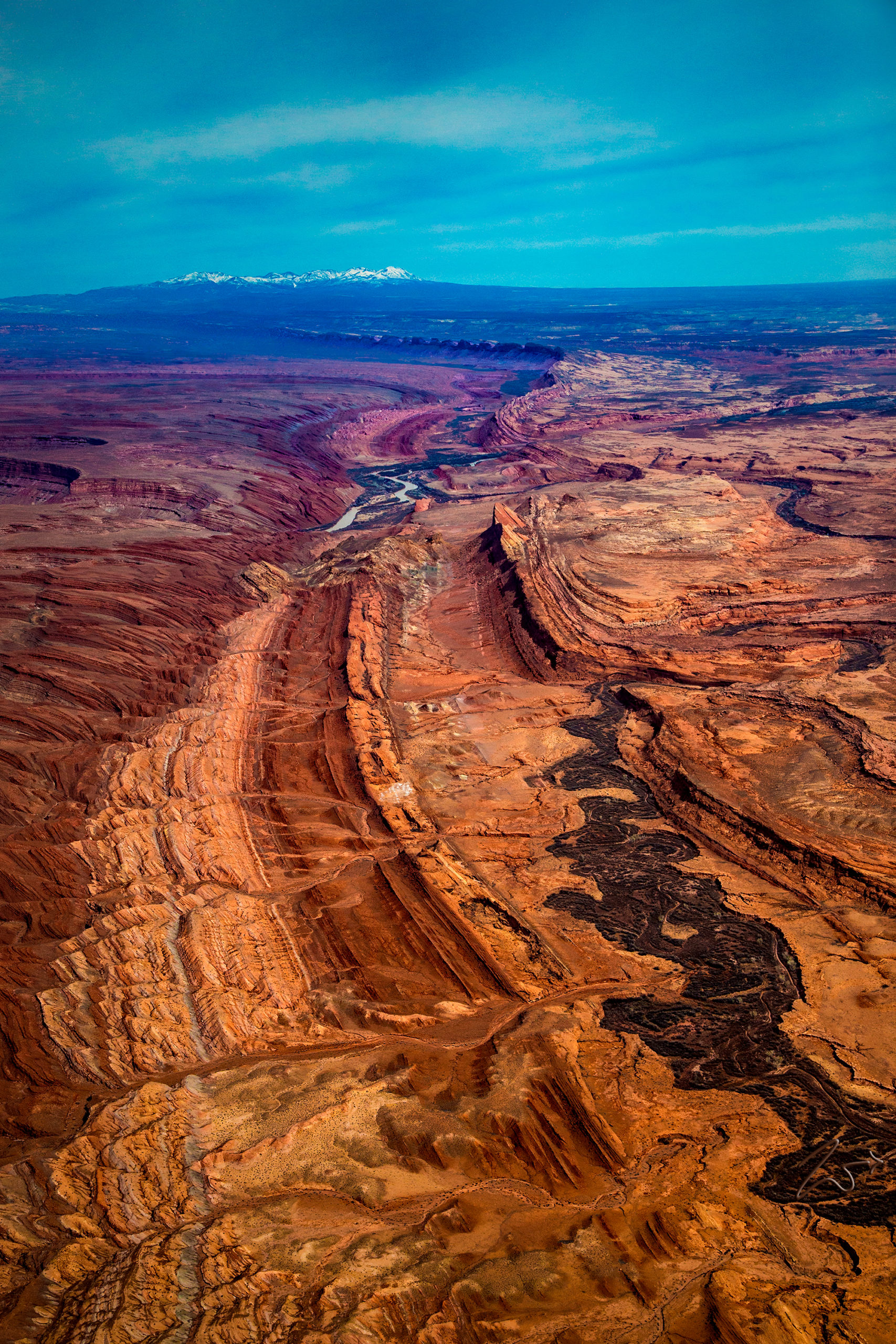~Select arrow for location key~
Comb Ridge is a sinuous and rugged monoclinal formation that stretches in a linear fashion from the northern reaches of Arizona’s Kayenta to the foothills of the Abajo Mountains in southern Utah, cutting across the heart of the Colorado Plateau. This colossal expanse of sandstone spans an impressive length of nearly 120 miles, with a width measuring a mile. In the native tongue of the First Nations Dine (Navajo) people, this ridge is known as “Tséyíkʼáán,” a name that conveys the image of rock extending in the shape of a slender edge..”
The remarkable geological structure serves as a vivid testament to the deep-seated fault that borders the eastern edge of the Monument Uplift. This momentous upheaval of solid stone occurred approximately 65 million years in the past when the subterranean tectonic plates, concealed beneath the Earth’s surface, experienced a violent slip. This geological event of monumental proportions left an extensive and rugged scar across what was once a smooth expanse of rock. These jagged scars, weathered over time, soar dramatically into steep peaks before plunging abruptly into unforeseen depths, revealing an awe-inspiring cyclical pattern. These towering formations, reaching heights of 300 to 900 feet above the barren plains, ultimately vanish into the surrounding ravines.
The most prominent segment of Comb Ridge lies to the north, where, for about 30 miles, the faultline ascends to heights of 700 feet above its surroundings. Here, the landscape unfolds with a gentle slope to the east, characterized by the uppermost layer of inclined white Navajo sandstone, gracefully inclined at an angle of 20°. To the west, an unbroken succession of sheer cliffs emerges, exposing various underlying strata, most notably the striking red Wingate sandstone.
~Select arrow for location key~
The eastern side of the reef, which is more easily accessible, is characterized by a multitude of short box canyons that are frequently adorned with springs, seeps, or pour-over pools. Within these sheltered ravines, the ancient Anasazi discovered ideal habitats, constructing settlements within alcoves and on benches. They adorned the canyon walls with captivating pictographs and petroglyphs, turning them into artistic masterpieces. Among the Combs alcoves, the ancient Ancestral Puebloans sought sanctuary, leaving behind remnants of their existence in the form of ruins and rock art that grace the shallow cave walls like a vibrant canvas.
Through meticulous archaeological surveys of Comb Ridge, a wealth of ancient secrets has been unveiled. From Ice Age encampments to 800-year-old Ancestral Puebloan cliff dwellings, the formation has yielded fascinating discoveries. Additionally, artifacts from Anglo settlers provide insights into the historic past, while enigmatic pathways carved into the desert terrain stretch for miles, their landscapes interspersed with remnants of Hopi pottery. These intriguing routes, referred to as “Anasazi roads,” are believed to connect significant locations, possibly serving as pathways for the Pueblo people to visit ancient shrines of great importance.





